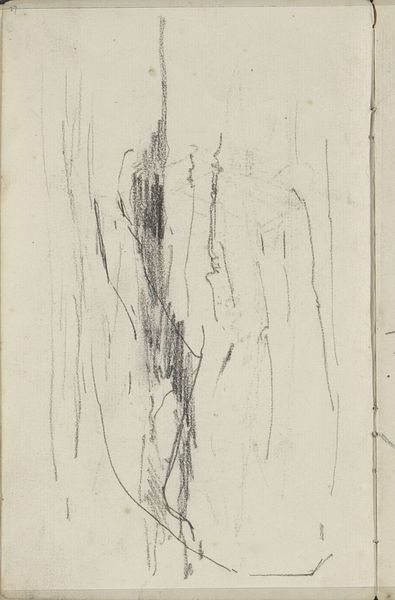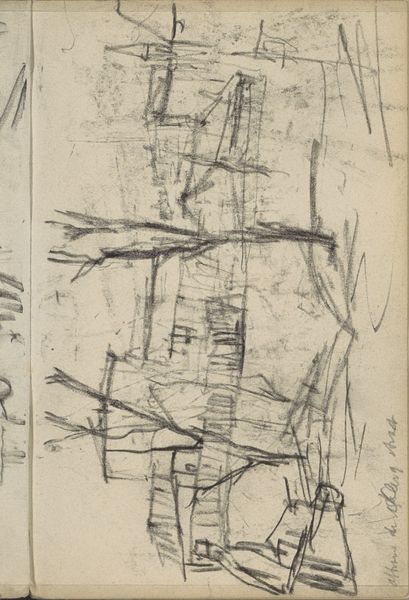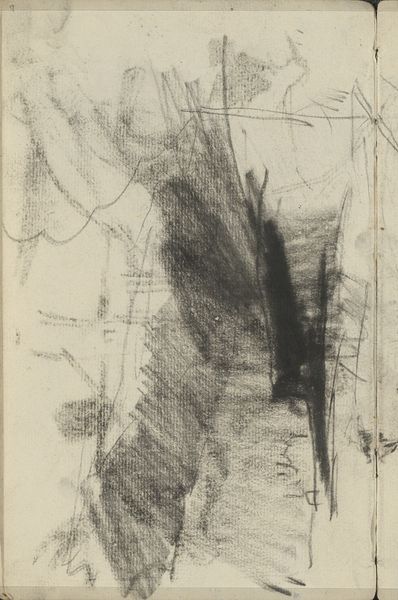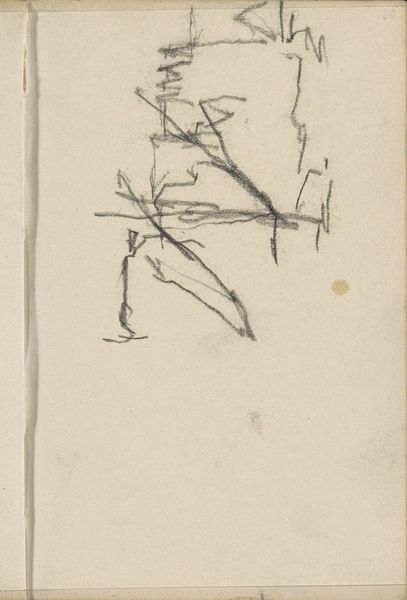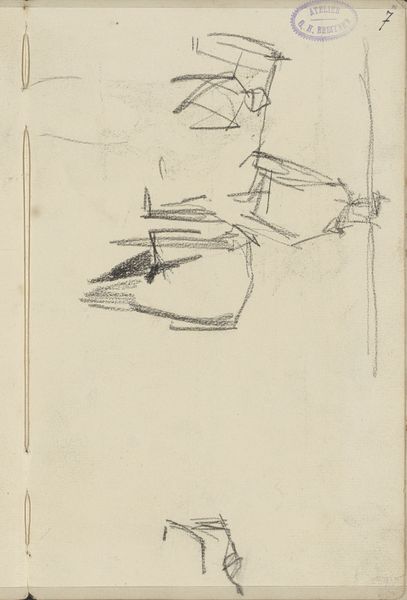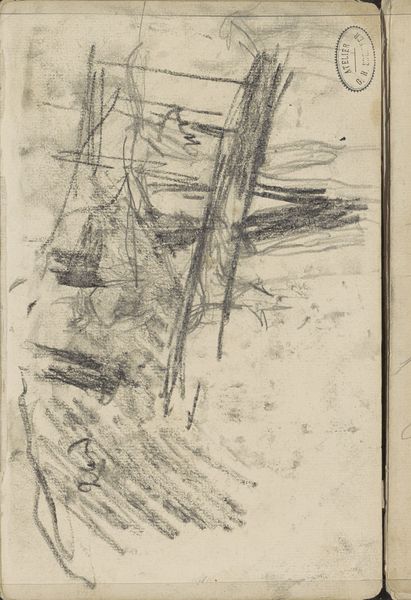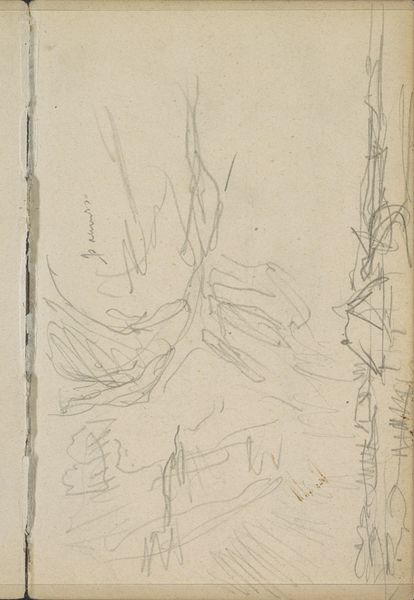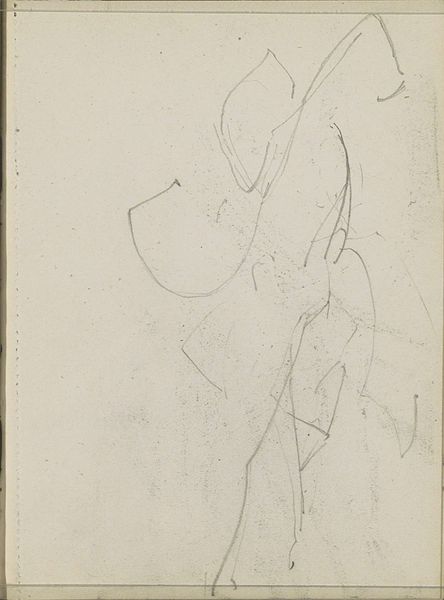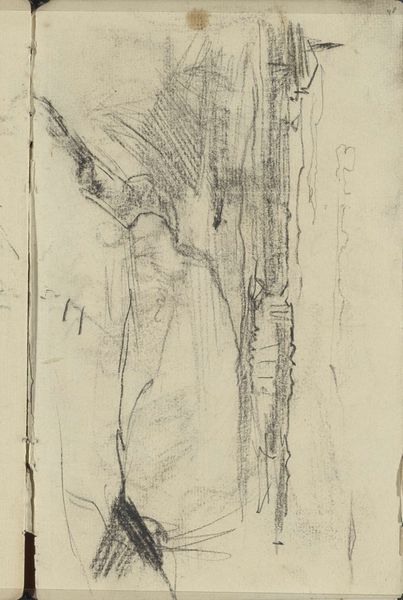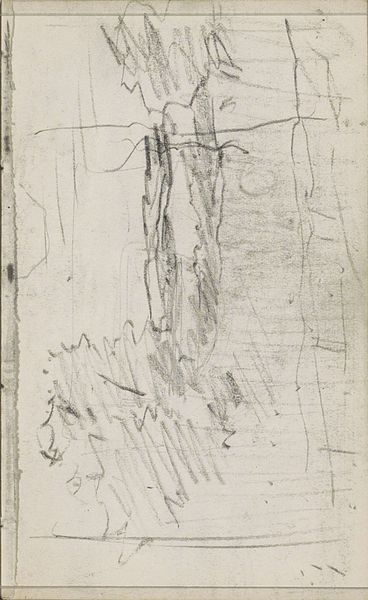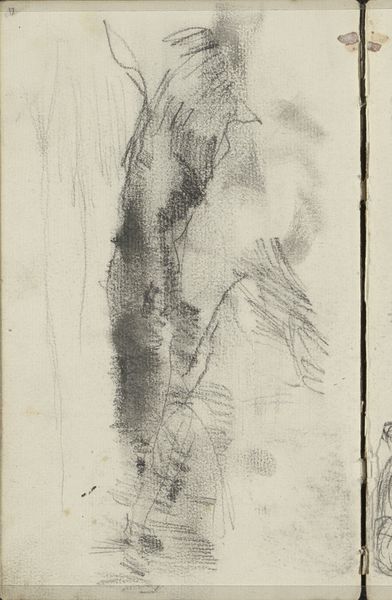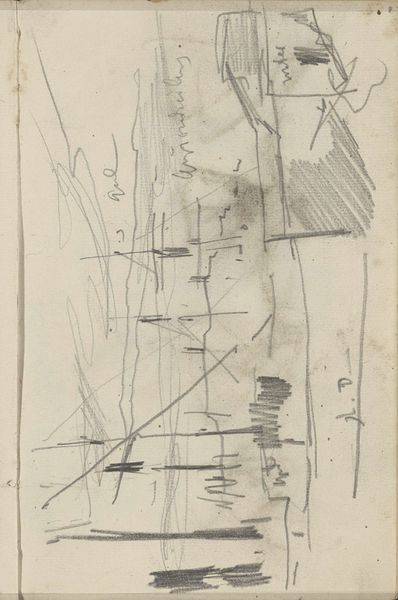
drawing, pencil
#
portrait
#
drawing
#
amateur sketch
#
light pencil work
#
quirky sketch
#
impressionism
#
figuration
#
personal sketchbook
#
idea generation sketch
#
sketchwork
#
ink drawing experimentation
#
pencil
#
sketchbook drawing
#
sketchbook art
#
initial sketch
Copyright: Rijks Museum: Open Domain
Curator: Here we have George Hendrik Breitner’s "Studieblad," a pencil drawing created between 1881 and 1883, currently held at the Rijksmuseum. Editor: It feels so fleeting, like a whispered secret caught on paper. The tentative lines give it an almost vulnerable quality. Curator: Indeed. Notice how Breitner uses delicate lines to suggest form. The composition, though sparse, guides your eye. The hatching, the varying pressure of the pencil… these elements create depth and shadow, abstract as it may be. Editor: But what is he exploring, beyond line and form? I see hints of a figure, perhaps in motion, fragmented, yet suggesting a working-class body, reflective of the realities Breitner often depicted of a changing Amsterdam. Curator: The drawing allows one to consider the act of seeing and recording itself, a commentary on how we perceive reality. It shows not necessarily what something IS, but how it's conceived through rapid mark-making, highlighting perception over strict representation. Editor: Yet his sketch invites me to reflect upon those very bodies absent from much of art history. Who were these people glimpsed in back alleys, by canals? What labour were they performing? Were they aware of this artist’s gaze? This opens conversations about class, labor, and representation. Curator: Your perspective acknowledges that context undeniably influences our interpretation. However, observe the interplay between light and shadow, the calculated arrangement of strokes that gives the composition a unique rhythm, regardless of sociohistorical concerns. It functions as a study in itself. Editor: Perhaps it is that rhythm and the immediacy of it which opens a window into Breitner’s world, urging us to recognize the labor and the humanity present, even in the fragmented margins he portrays. These preliminary sketches give us access. Curator: Ultimately, whether through purely aesthetic means or via sociopolitical reading, Breitner stimulates discussion on the intersection of seeing, art, and experience. Editor: Agreed. It’s a simple yet profound piece, which inspires curiosity both through its artful execution and the human narratives it evokes.
Comments
No comments
Be the first to comment and join the conversation on the ultimate creative platform.
